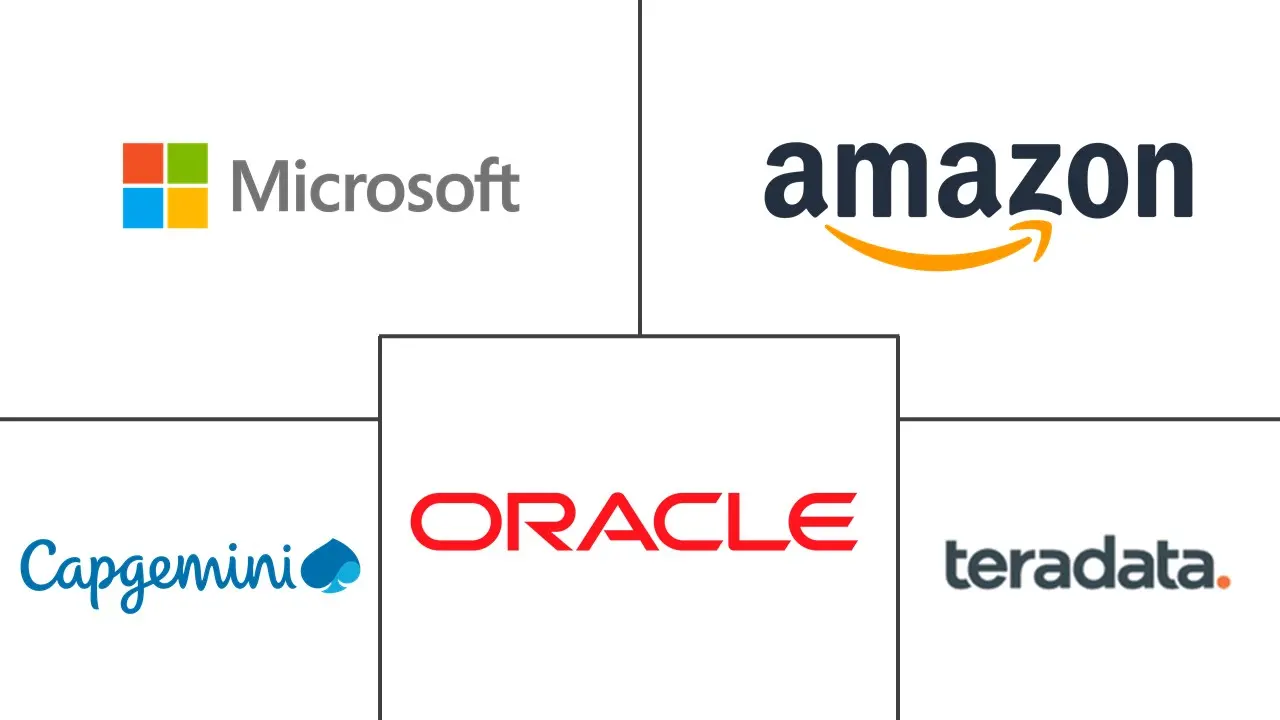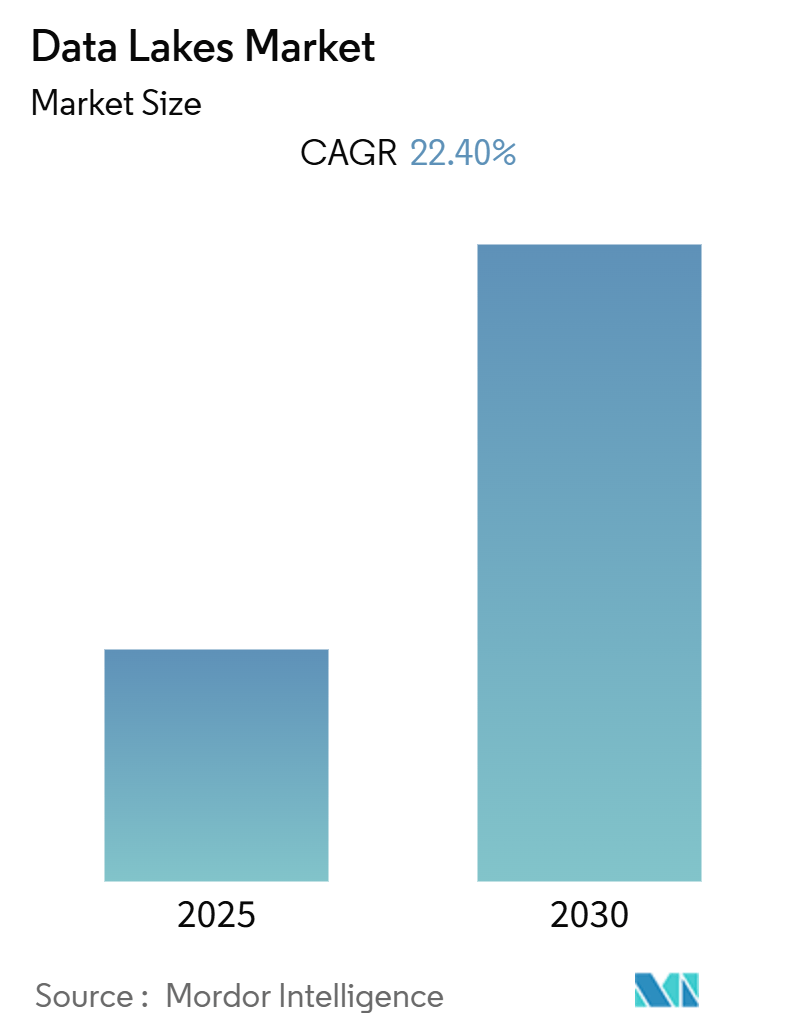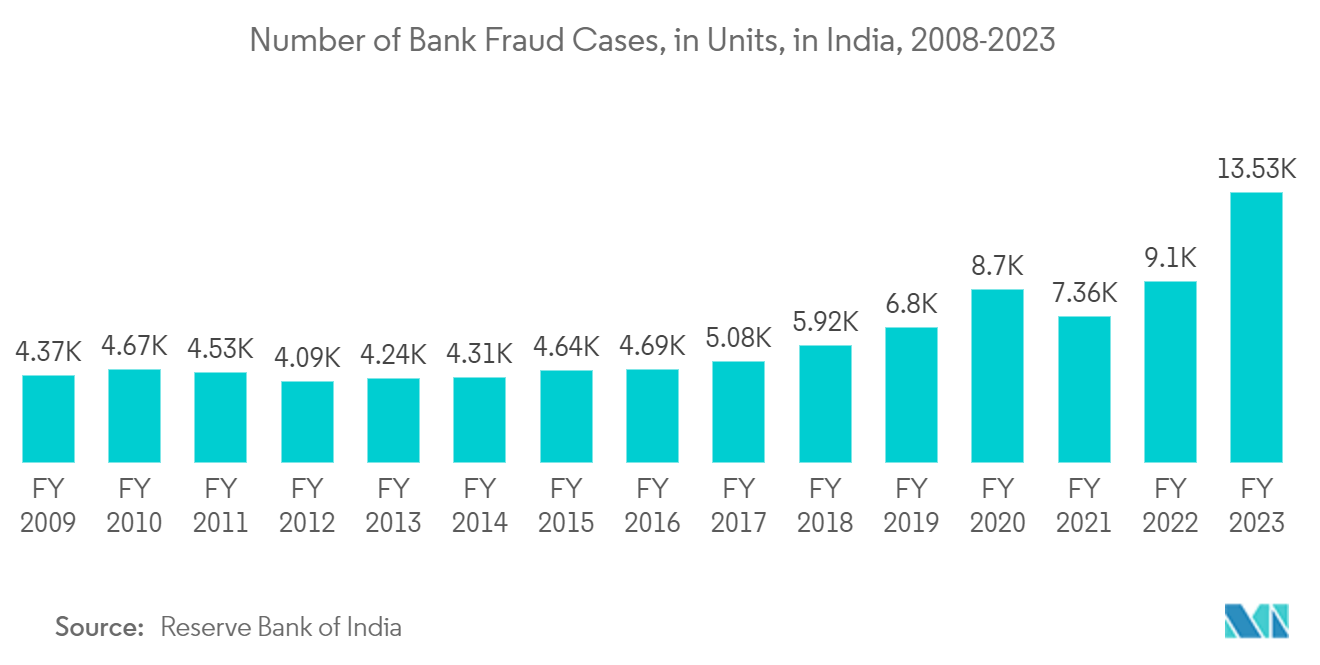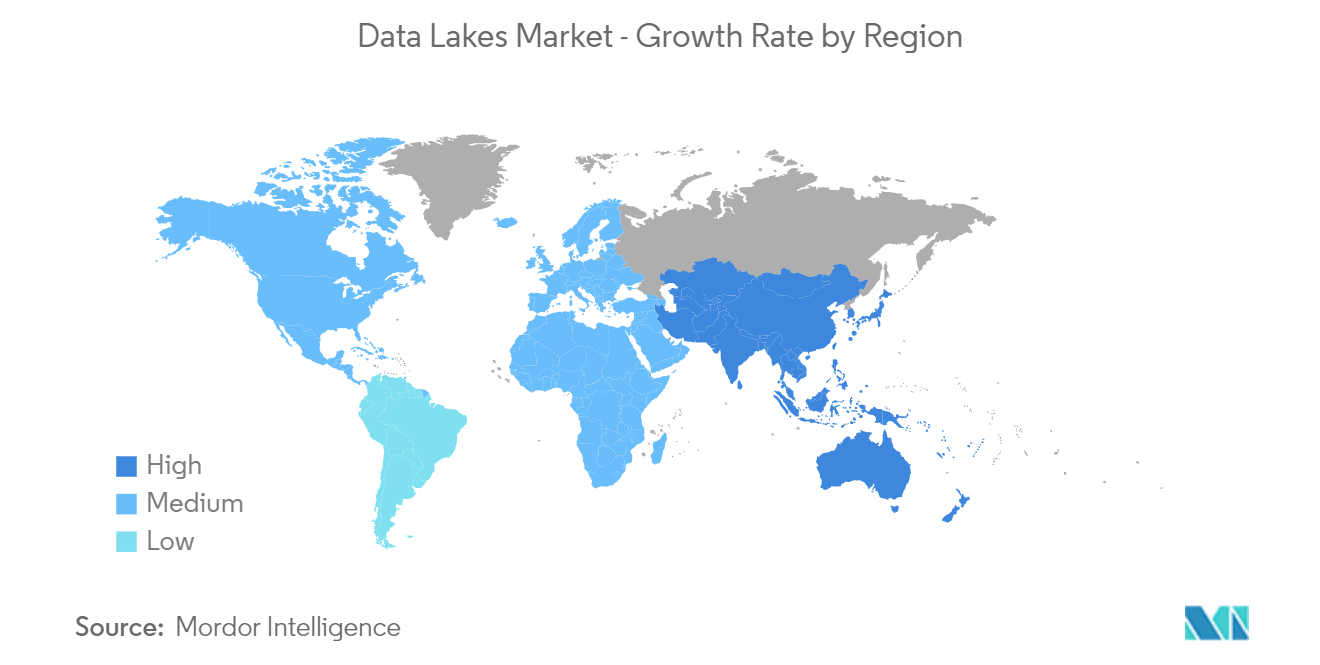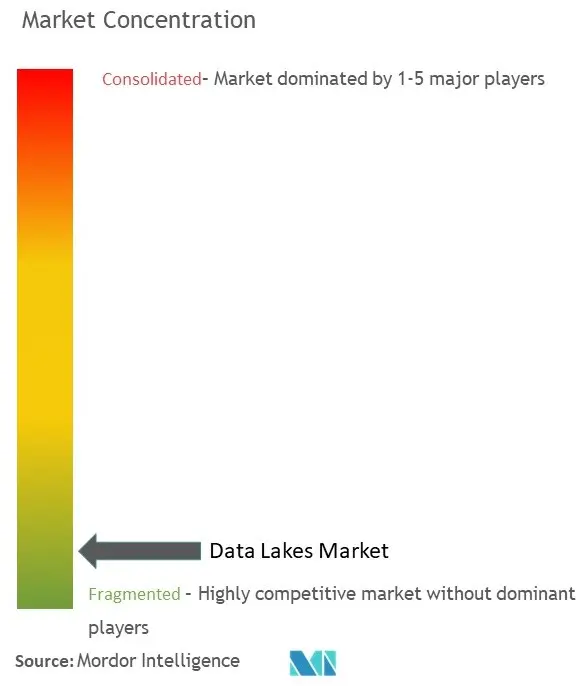Data Lake Market Analysis
The Data Lakes Market is expected to register a CAGR of 22.40% during the forecast period.
A data lake is a central repository that stores large volumes of raw, structured, semi-structured, and unstructured data, making it a valuable asset for organizations seeking to extract valuable insights from their data.
- The rise of big data and the need for advanced analytics solutions fueled the demand for data lakes. Organizations wanted to store and process vast amounts of diverse data types efficiently.
- The proliferation of data due to adopting the Internet of Things (IoT) has been a significant driver of the data lakes market. IoT devices generate an enormous volume of data, often in real time. Data lakes can handle this massive influx of data without compromising performance.
- Data lakes enable organizations to leverage advanced analytics capabilities and gain a competitive advantage in today's data-driven business landscape. As businesses continue to recognize the importance of data-driven insights, the demand for data lakes with advanced analytics features is expected to grow.
- Slow onboarding and data integration challenges have been significant factors restraining the growth and adoption of data lakes in the market. Integrating data from various sources into a data lake can be complex and time-consuming. Organizations may store data in different formats, databases, and systems, requiring significant effort to harmonize and consolidate the data effectively.
Data Lake Market Trends
BFSI End-user Vertical Segment is Expected to Hold Significant Market Share
- The BFSI sector generates and handles vast amounts of data, including customer transaction data, account information, financial market data, insurance claims, credit scores, etc. Data lakes provide BSI organizations with a scalable and flexible solution for managing, processing, and analyzing this massive volume of diverse data.
- Data lakes enable BFSI organizations to consolidate and analyze customer data from multiple sources, such as banking transactions, credit card usage, and online interactions. This consolidated view helps gain valuable insights into customer behavior, preferences, and needs, facilitating personalized, targeted marketing.
- Data lakes are a central repository for diverse data types, including transactional data, user behavior patterns, and historical records. By applying advanced analytics and machine learning algorithms, BFSI organizations can detect and prevent fraudulent activities more effectively.
- According to the Reserve Bank of India, In the financial year 2023, the Reserve Bank of India (RBI) reported more than 13 thousand bank fraud cases across India. This was an increase compared to the previous year and turned around the last decade's trend. The total value of bank frauds decreased from INR 1.38 trillion (USD 0.017 trillion) to INR 302 billion (USD 3.68 billion).
- The BFSI Sector faces various risks, including credit, market, and operational risks. Data lakes allow banks and insurance companies to aggregate and analyze risk-related data to make informed decisions, manage exposures, and comply with regulatory requirements.
- Many companies are launching and developing banking and finance solutions. In September 2022, Tres, the company that made the first financial data lake for Web3 enterprises, announced that it had raised USD 7.6 million in a seed phase led by bold start ventures, with help from F2, Mantis, New Form, The Chainsmokers, Blockdaemon Ventures, Kenetic, and Alchemy.
North America is Expected to Hold Significant Market Share
- North America is one of the leading regions in data lake adoption, driven by various factors, including numerous tech-savy industries, cloud infrastructure, and a strong focus on data-driven decision-making.
- North America has many data-intensive industries, such as information technology, telecom, BFSI, healthcare, retail, and manufacturing. The massive volume of data these industries generate drives the demand for data lakes as a scalable and flexible data storage and processing solution.
- Cloud computing is well-established and widely adopted in this region. Cloud-based data lakes offer numerous advantages, including cost-efficiency, scalability, and ease of implementation, making them an attractive choice for businesses of all sizes.
- North American enterprises have been early adopters of advanced analytics and artificial intelligence (AI) technologies. Data lakes provide a foundation for these data-driven applications by offering a centralized repository for diverse and large datasets.
- The growth of the Internet of Things (IoT) and big data technologies in the region generate massive amounts of diverse data. Data lakes are well suited to handle the complexity and volume of data from IoT devices and big data sources.
Data Lake Industry Overview
The Data Lakes Market is fragmented with major players like Microsoft Corporation, Amazon.com Inc., Capgemini SE, Oracle Corporation, and Teradata Corporation. Players in the market are adopting strategies such as partnerships and acquisitions to enhance their product offerings and gain sustainable competitive advantage.
June 2024: Fivetran, a provider of data pipeline solutions for enterprises, has announced the general availability of its latest product, the Fivetran Managed Data Lake Service. This new service is designed to eliminate the repetitive tasks associated with managing data lakes by automating and streamlining the process. This allows clients to focus on leveraging their data for product development. Currently, the service supports Amazon S3, Azure Data Lake Storage (ADLS), and Microsoft OneLake, with future support for Google Cloud on the roadmap.
December 2023: Panther Labs, a leader in cybersecurity innovation for large-scale detection and response, announced the launch of its latest capabilities: Security Data Lake Search and Splunk Integration. These advancements signify a major step forward in addressing security challenges in today's cloud-centric environment. Panther's integration combines the cost-efficiency of modern security data lakes with the user-friendly nature of traditional SIEM interfaces. This enables security teams to identify and respond to threats, strengthening their defenses for extensive, decentralized cloud operations.
Data Lake Market Leaders
-
Microsoft Corporation
-
Amazon.com Inc.
-
Capgemini SE
-
Oracle Corporation
-
Teradata Corporation
- *Disclaimer: Major Players sorted in no particular order
Data Lake Market News
- August 2024: Cloudian and Lenovo have launched the HyperStore AI data lake platform, boasting enhanced performance and power efficiency tailored for artificial intelligence (AI) workloads. Constructed on Lenovo's ThinkSystem SR635 V3 all-flash servers, this solution meets the rising need for scalable and secure systems adept at managing next-generation AI tasks.
- August 2024: Beyon has partnered with LigaData, an innovative data analytics and cloud firm located in Silicon Valley, California. The partnership would create an advanced Data Lakehouse, envisioned as a centralized hub for all data belonging to the Beyon Group. This strategic move aims to fortify Beyon's data infrastructure for the future, capitalizing on the myriad advantages offered by advanced cloud technologies.
Data Lake Industry Segmentation
A data lake is a centralized repository that allows consumers to store all the semi-structured, structured, and unstructured data at any scale. Consumers can store their data as-is without having to structure it first. They can run in different types of analytics, from dashboards and visualizations to big data processing, real-time analytics, and machine learning, to make better decisions.
The data lakes market is segmented by offering (solution, service), by deployment (cloud, on-premise), by end-user vertical (IT and telecom, BFSI, healthcare, retail, manufacturing, other end-user verticals)), by geography (North America (United States, Canada), Europe (United Kingdom, Germany, France, Italy, Rest of Europe), Asia Pacific (China, Japan, India, Rest of Asia Pacific), Latin America (Mexico, Brazil, Argentina, Rest of Latin America), Middle East and Africa (United Arab Emirates, Saudi Arabia, South Africa, Rest of the Middle East and Africa).
The market sizes and forecasts are provided in terms of value in USD for all the above segments.
| By Offering | Solution | ||
| Service | |||
| By Deployment | Cloud-based | ||
| On-premise | |||
| By End-user Vertical | IT and Telecom | ||
| BFSI | |||
| Healthcare | |||
| Retail | |||
| Manufacturing | |||
| Other End-user Verticals | |||
| By Geography | North America | United States | |
| Canada | |||
| Europe | United Kingdom | ||
| Germany | |||
| France | |||
| Italy | |||
| Asia | China | ||
| Japan | |||
| India | |||
| Australia and New Zealand | |||
| Latin America | Mexico | ||
| Brazil | |||
| Argentina | |||
| Middle East and Africa | United Arab Emirates | ||
| Saudi Arabia | |||
| South Africa | |||
Data Lakes Market Research Faqs
What is the current Data Lakes Market size?
The Data Lakes Market is projected to register a CAGR of 22.40% during the forecast period (2025-2030)
Who are the key players in Data Lakes Market?
Microsoft Corporation, Amazon.com Inc., Capgemini SE, Oracle Corporation and Teradata Corporation are the major companies operating in the Data Lakes Market.
Which is the fastest growing region in Data Lakes Market?
Asia-Pacific is estimated to grow at the highest CAGR over the forecast period (2025-2030).
Which region has the biggest share in Data Lakes Market?
In 2025, the North America accounts for the largest market share in Data Lakes Market.
What years does this Data Lakes Market cover?
The report covers the Data Lakes Market historical market size for years: 2019, 2020, 2021, 2022, 2023 and 2024. The report also forecasts the Data Lakes Market size for years: 2025, 2026, 2027, 2028, 2029 and 2030.

